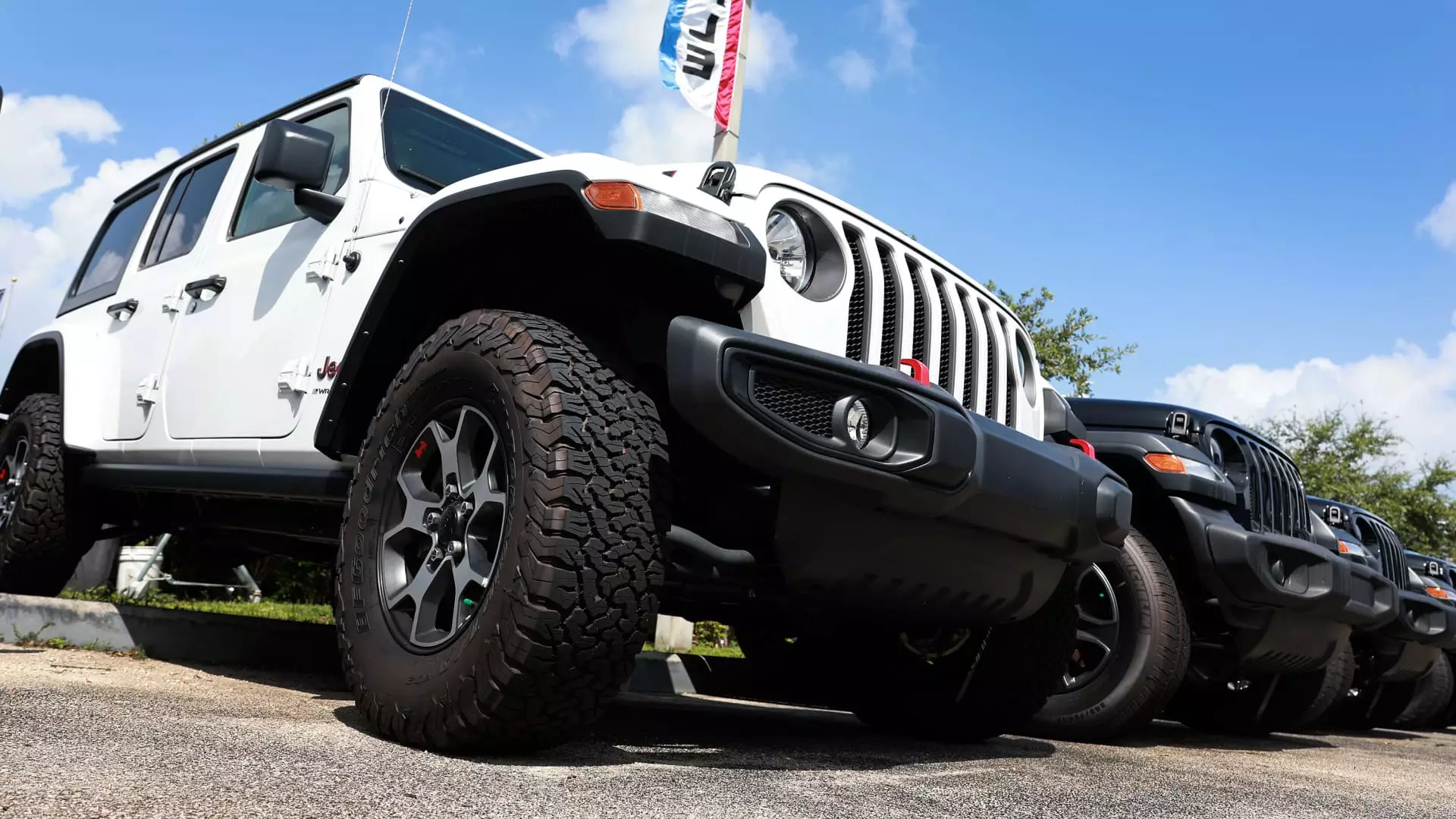The landscape of the new vehicle market in the United States continues to be fraught with challenges in the third quarter of 2023. Growing economic and political uncertainties, coupled with high-interest rates and increasing vehicle prices, are all contributing factors to a predicted downturn in vehicle sales. With estimates forecasting a decline of approximately 2% compared to the same quarter last year, the automotive industry finds itself at a pivotal juncture.
Analysts from industry leaders such as Cox Automotive and Edmunds.com project that the total number of new vehicles sold in the U.S. will hover around 3.9 million units during the third quarter. This figure marks a further drop from previous numbers, suggesting a 5% decrease from the second quarter of the same year. The ongoing economic pressures create a sense of caution among consumers, limiting their ability to make large purchases, including automobiles.
Federal Reserve interventions, particularly their recent decision to lower interest rates, have been met with cautious optimism. Charlie Chesbrough, a senior economist at Cox Automotive, highlights that while these moves may stimulate the economy, they do not guarantee a robust recovery for auto sales in the immediate future. “Affordability remains the main obstacle to a stronger market,” he states, with many consumers feeling the pinch of high sales prices—averaging around $47,870 for new vehicles.
One of the most pressing issues influencing sales is consumer affordability. Data shows that financing an average new vehicle now requires around $40,000, which many potential buyers find prohibitive. Jessica Caldwell, head of insights at Edmunds, emphasizes this concern, noting that “the new market is quite limiting for a lot of buyers.” This predicament places significant barriers not just on individual consumers, but also on automakers striving to maintain or grow their market shares.
Some brands, however, appear to be navigating these turbulent waters successfully. Honda and Ford are projected to experience sales growth compared to the previous year, benefitting from strategic decisions that resonate with current consumer demands. In contrast, manufacturers such as Stellantis, Toyota, and BMW are facing significant losses, particularly Stellantis, where sales have been predicted to drop by as much as 21%. The firm’s CEO, Carlos Tavares, has placed a premium on profit margins over market share, leading to significant ramifications for brands under its umbrella.
Despite the overall struggles of the automotive market, the sector for electric vehicles (EVs) shows signs of growth, albeit at a slower pace than anticipated. Sales for EVs are expected to rise by approximately 8% in the third quarter relative to the previous year, demonstrating a tangible interest in more sustainable options among consumers. However, even industry leader Tesla is experiencing headwinds; it is projected that its sales will dip by 2.4%, resulting in its market share falling below the critical 50% threshold for the second consecutive quarter.
Incentives play a crucial role in promoting EV sales, with current trends indicating that governmental support is increasingly driving consumer interest. Data suggests that incentives, including the federal tax credit of up to $7,500, now make up about 13.3% of the average transaction price for EVs. This is a notable contrast to traditional internal combustion engine vehicles, where incentives remain significantly lower.
As we approach the final quarter of 2023, industry analysts express a cautious sense of optimism for the future. While the third quarter is expected to yield challenging results for new vehicle sales, there is hope that conditions may improve by 2024. The current landscape has illustrated the vital need for automakers to adapt their strategies to align with evolving consumer expectations while prioritizing affordability.
The anticipated sales forecast for 2024, estimated at around 15.7 million vehicles, reflects thoughts of better days ahead for the industry. Nevertheless, both Cox and Edmunds anticipate challenges, emphasizing the importance of consumer confidence and economic stability in nurturing a regenerative vehicle market. The ongoing trends in EV sales also suggest a potential pivot in consumer behavior, which could mark a significant shift in the automotive market landscape moving forward.
Although the new vehicle market in the U.S. confronts headwinds rooted in affordability and economic uncertainties, manufacturers capable of adapting to these changes may find opportunities in this evolving scenario.

